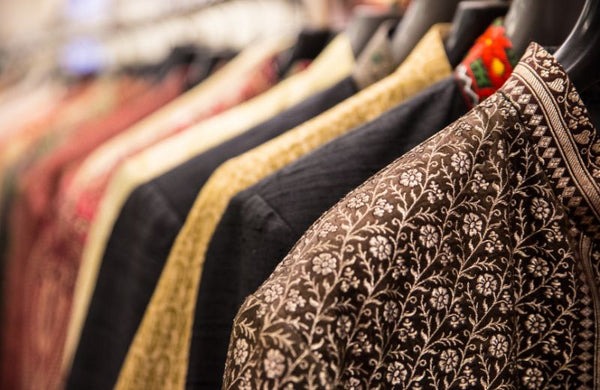Choosing the right fabric is key to looking and feeling your best in unstitched suits. The fabric you select can affect everything from comfort to style. With so many options, it can be overwhelming to decide.
This guide will help you understand different materials for unstitched suits, their benefits, and what to consider when picking the perfect fabric. Whether dressing for a special occasion or everyday wear, finding the right material makes all the difference.
Factors to Consider When Choosing Fabric
- Climate & Season: The climate and season play a significant role in fabric selection. For summer, lightweight materials like cotton, linen, and chiffon are ideal as they keep you cool and comfortable. In contrast, winter calls for warmer fabrics such as wool, velvet, and brocade, which provide insulation and style.
- Occasion: The occasion also influences your fabric choice. Cotton and linen are perfect for casual events because of their relaxed feel. Formal occasions often require luxurious fabrics like silk, wool, or jacquard. At the same time, festive events can be enhanced with rich materials like velvet, brocade, or embroidered fabrics that add a touch of elegance.
- Comfort & Maintenance: Consider how comfortable the fabric will be and how easy it is to maintain. Easy-care fabrics, such as polyester blends, require less effort to keep looking good. On the other hand, high-maintenance fabrics like silk and linen may need special care, including careful washing and ironing. Additionally, look for wrinkle-resistant options to keep your outfit looking sharp with minimal effort.
Popular Fabric Choices for Different Unstitched Suits
- Everyday Wear: For daily comfort, fabrics like cotton, lawn, and khadi are popular choices. They are breathable, easy to maintain, and perfect for casual outings, making them ideal for everyday wear.
- Wedding & Festive Wear: For special occasions, opt for luxurious fabrics such as silk, organza, velvet, and brocade. These materials add elegance and richness, making them perfect for weddings and festive celebrations.
- Office & Formal Wear: For a professional look, wool blends, linen blends, and crepe are excellent options. These fabrics offer a polished appearance while ensuring comfort throughout the workday.
- Designer & Statement Suits: When making a fashion statement, consider fabrics like chiffon, georgette, net, and lace. These materials are often used in designer suits, providing a unique and stylish flair for standout looks.
How to Identify High-Quality Fabric?
Tight Weaves and Smooth Textures: High-quality fabric typically features tight weaves that enhance durability and provide a smooth texture. Inspect the fabric closely to ensure it feels well-constructed.
Colorfastness: Check for colourfastness by rubbing the fabric. If color bleeds onto your fingers, it may not be a quality fabric. High-quality materials should retain their color even with some friction.
Feel the Fabric: Good quality fabric should feel substantial and not flimsy. When you hold it, it should have a nice weight and a pleasant hand feel, indicating durability and comfort.
Read Labels: Always read the labels for information on fabric composition and care instructions. High-quality fabrics often come with clear guidelines for maintaining longevity and proper care.
Maintenance Tips for Different Fabrics
Cotton/Linen: To prevent shrinkage, machine wash cotton and linen fabrics on a cold setting and air dry. This helps maintain their shape and softness over time.
Silk: Silk requires special care; it’s best to dry clean or gently hand wash in cold water. Avoid wringing the fabric to preserve its delicate fibers and sheen.
Wool: Wool should be dry cleaned only to maintain its shape and prevent damage. Avoid washing it at home, as it can lead to shrinkage and distortion.
Synthetics (Polyester/Rayon): For synthetic fabrics like polyester and rayon, use low-heat ironing to remove wrinkles. Avoid overwashing to extend the life of the fabric and keep it looking fresh.
Final thoughts
Choosing the right fabric for your unstitched suit is essential for comfort, style, and functionality. You can make informed decisions that suit your needs by considering factors such as climate, occasion, and maintenance. Understanding how to identify high-quality materials and care for them will ensure your investment lasts. With the right fabric, you’ll look great and feel confident in any setting.
